Ebey’s Landing is a spectacular stretch of coastline on the west shore of Whidbey Island.
Ebey's Landing has soaring views across Admiralty Inlet to the Olympic Mountains, a wild beach, sheer cliffs, and a wide-open prairie dotted with historic farms.
Some of Whidbey Island’s best hiking trails and coastal views are here, with hikes ranging from 0.6 miles to 5 miles. There are also some historic buildings to visit, like the Jacob and Sarah Ebey House and Blockhouse, and Ferry Building.
On-leash dogs are permitted on the beach and hiking trails.
History: Ebey’s Landing was originally settled in 1850 by pioneer Isaac Ebey. Ebey had moved from the midwest to establish the first land grant on Whidbey Island, attracted by the fertile farmland on the prairie. He was soon followed by his wife and children, and then three years later by his parents, siblings and other extended family. His father, Jacob Ebey, aquired the land on the ridge overlooking the prairie, and built a house and blockhouse in 1856.
Unfortunately Isaac Ebey met a gruesome end in 1857 when he was beheaded by Haida Indians, most likely in retaliation for the massacre of 27 Indians at Port Gamble by a U.S. warship. His wife and children survived by hiding in the blockhouse. Isaac Ebey's headless body is buried at the nearby Sunnyside Cemetery.
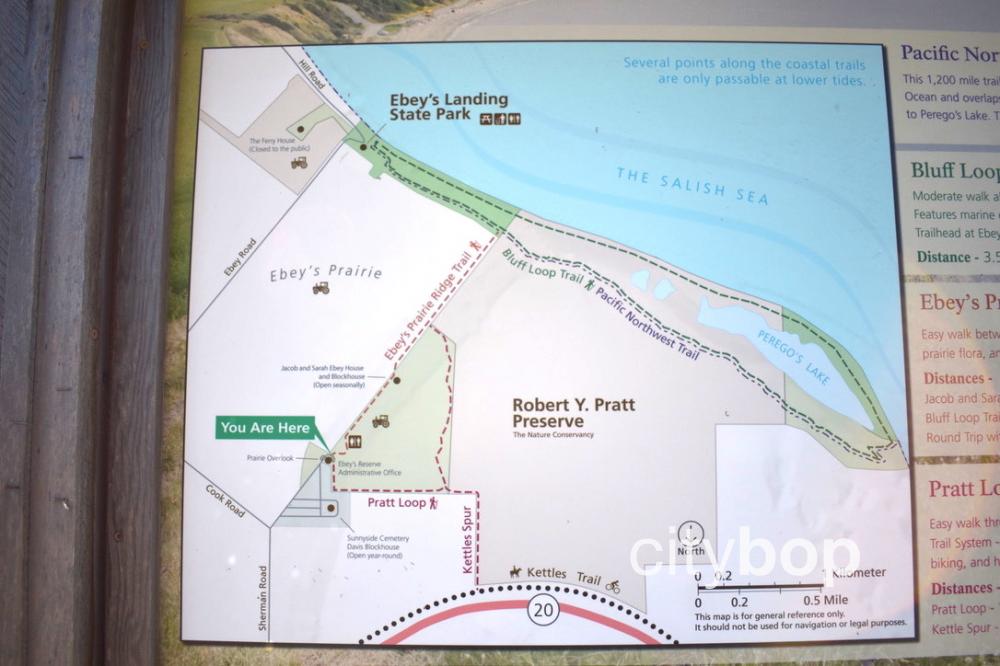
10 best things to do at Ebey’s Landing
1. Bluff Trail Loop (3.5 miles)
The Bluff Trail Loop (3.5 miles round-trip) starts at the beach parking lot at Ebey’s Landing State Park. The trail ascends up the bluff overlooking the beach, then zigzags down the slope to beach level, and travels back along the beach past Perego’s Lake to the parking lot. The beach portion of this hike should only be attempted at low tide.
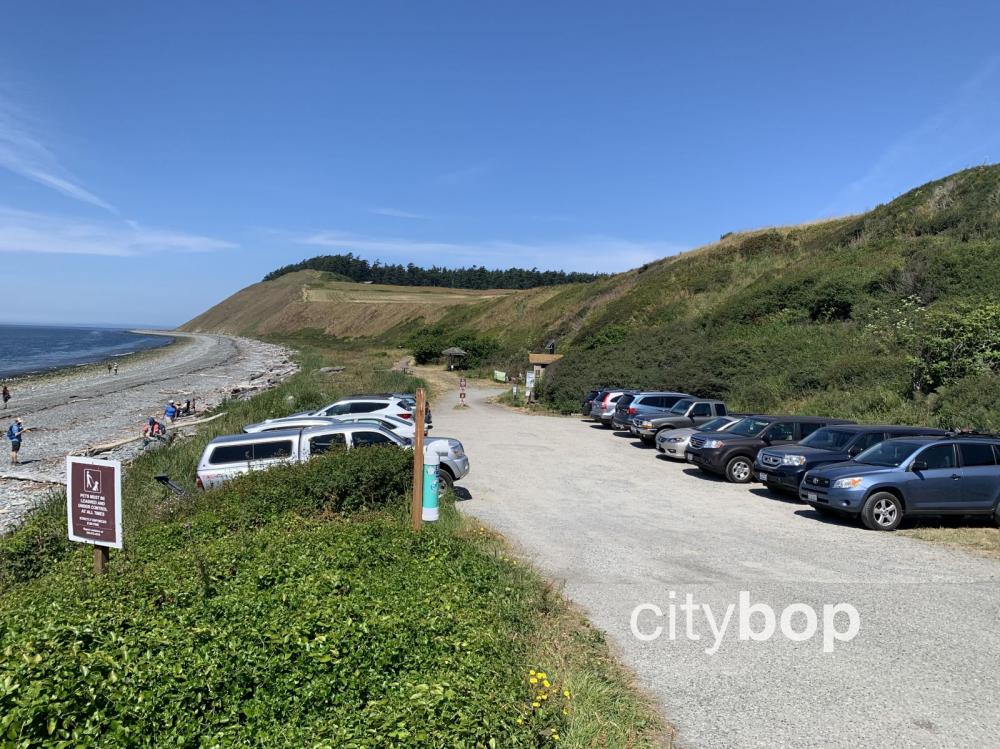
This is the Ebey's Landing State Park beach parking lot.
.jpg)
There are lots of stairs as the trail ascends the bluff.
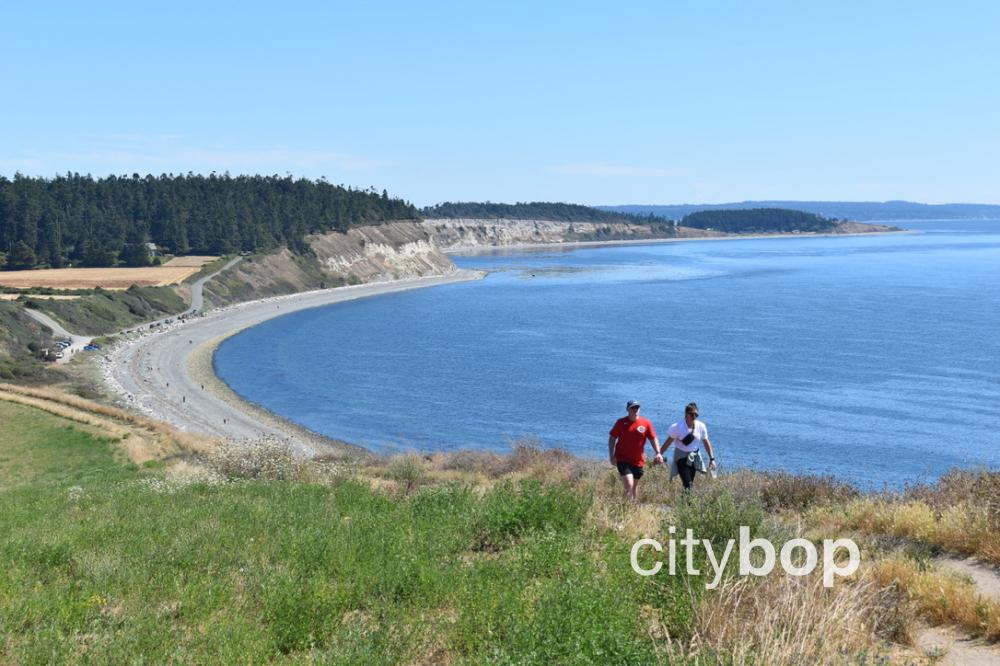
2. Ebey’s Prairie Ridge Trail: to Ebey House (0.6 miles)
Ebey’s Prairie Ridge Trail (0.6 miles roundtrip) is a flat, easy hike that starts inland at the ridge parking lot, adjacent to Sunnyside Cemetery. Follow the trail along the ridge until you reach the Jacob and Sarah Ebey House and Blockhouse, run by the National Park Service (check seasonal hours), then return to the parking lot for a 0.6 mile round-trip. The Blockhouse was used for defense against Native Indian attacks.
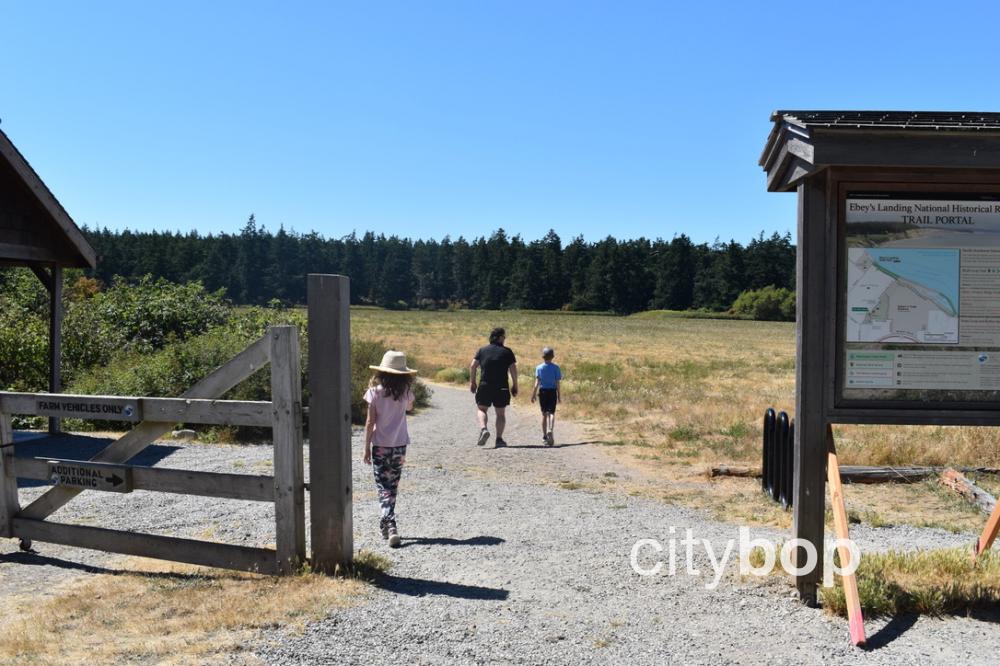
This is the trailhead for the Prairie Ridge Trail at Ebey's Landing, with a convenient map.

The flat trail passes through a meadow, before reaching the Ebey House and Blockhouse.
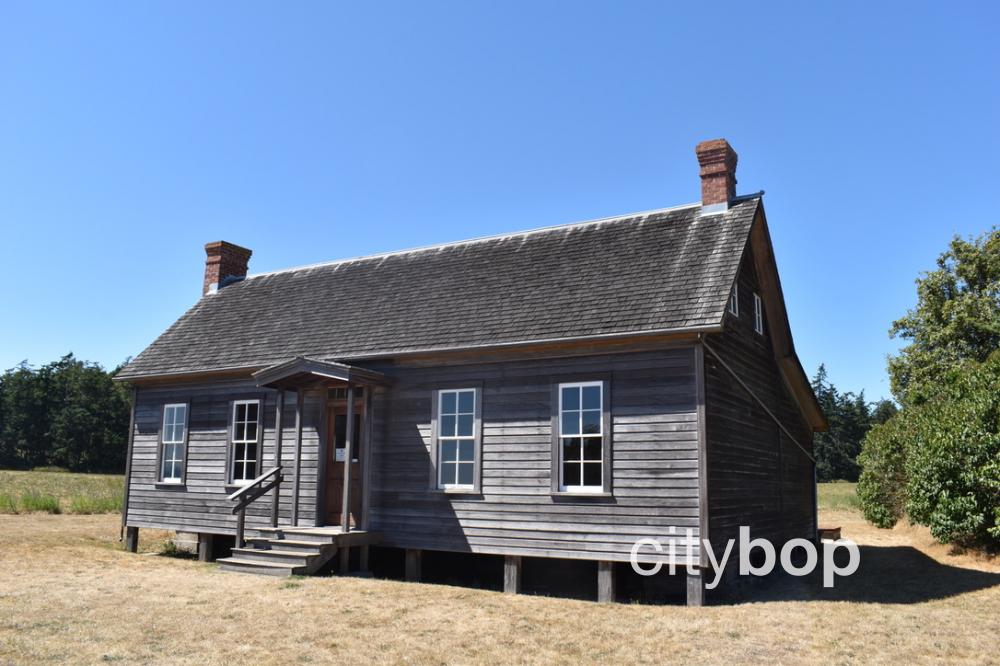
The Ebey House was constructed by Jacob Ebey in 1856, after he secured a 320-acre land claim on the ridge overlooking his son's 640-acre land on the prairie below. It's one of the oldest dwellings in Washington State, and is open seasonally to tour (check hours).
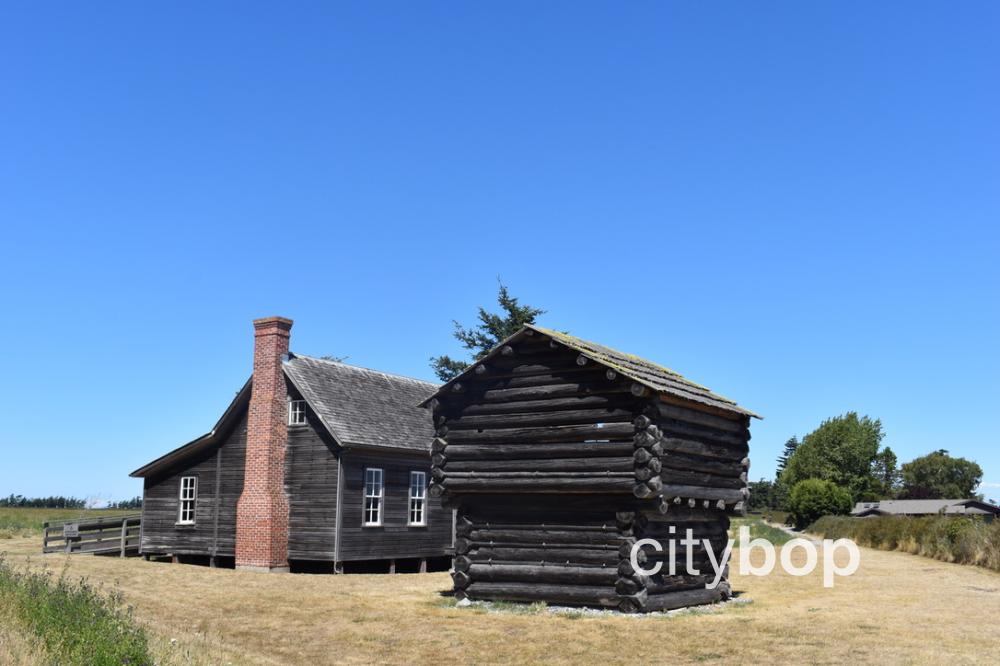
The two story blockhouse protected early settlers from attack by Native Indians. Isaac Ebey's wife and sons hid here when he was shot and decapitated by Indians. The Ebey House was originally enclosed by a stockade fence, with four blockhouses on each corner of the stockade.
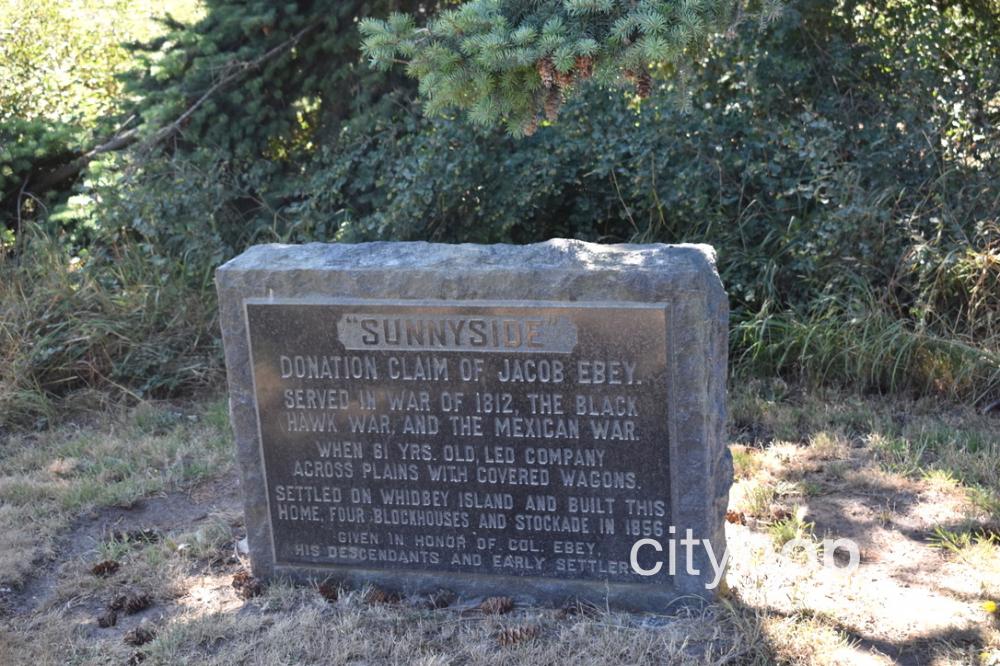
A plaque commemorates the "Sunnyside" land claim of Jacob Ebey, Isaac's father. It's fascinating to note that he was 61 years old when he led a company across the plains with covered wagons on the Oregon Trail.
3. Ebey’s Prairie Ridge Trail: to the bluff (1.5 miles)
If you’d like a longer hike, start at the ridge parking lot adjacent to the Sunnyside Cemetery, and follow the trail past the Ebey House & Blockhouse all the way to the bluff-top overlooking the beach (that runs into the Bluff Trail). Turn around and return to the parking lot, bringing the total round-trip to 1.5 miles.

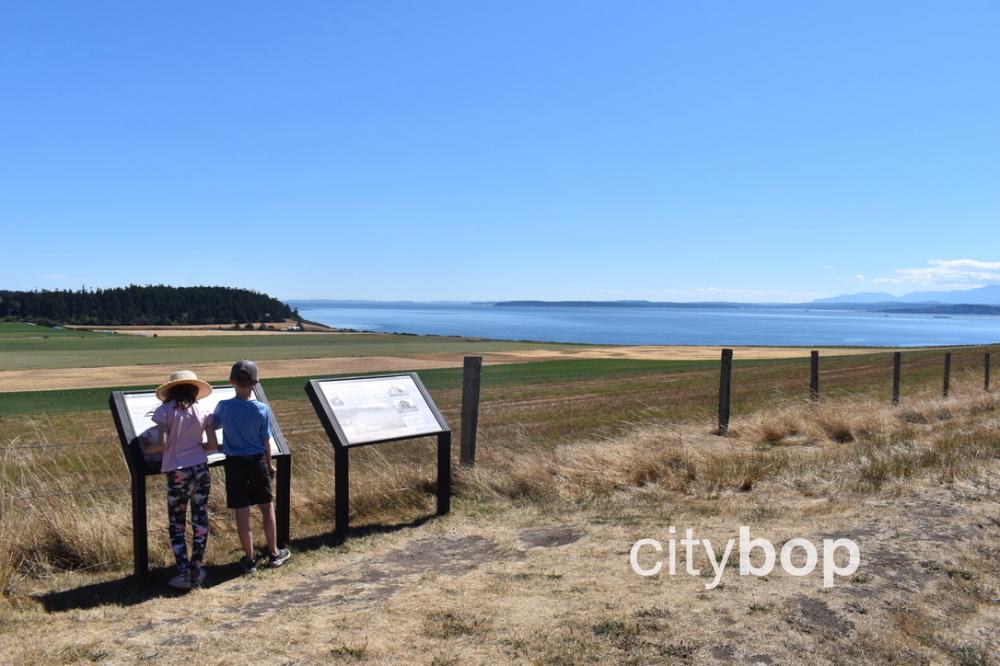
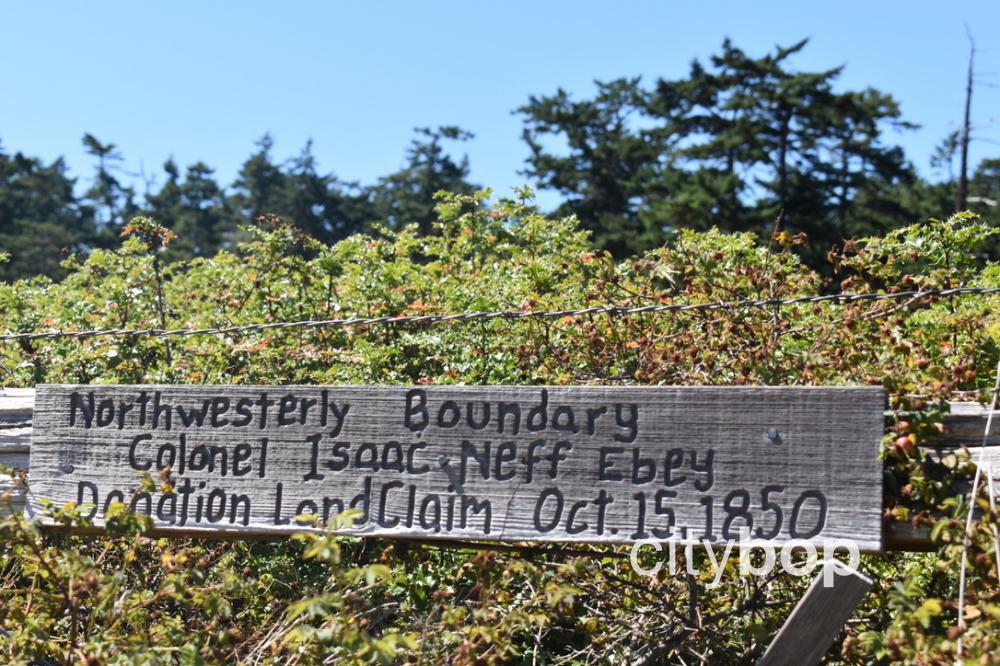
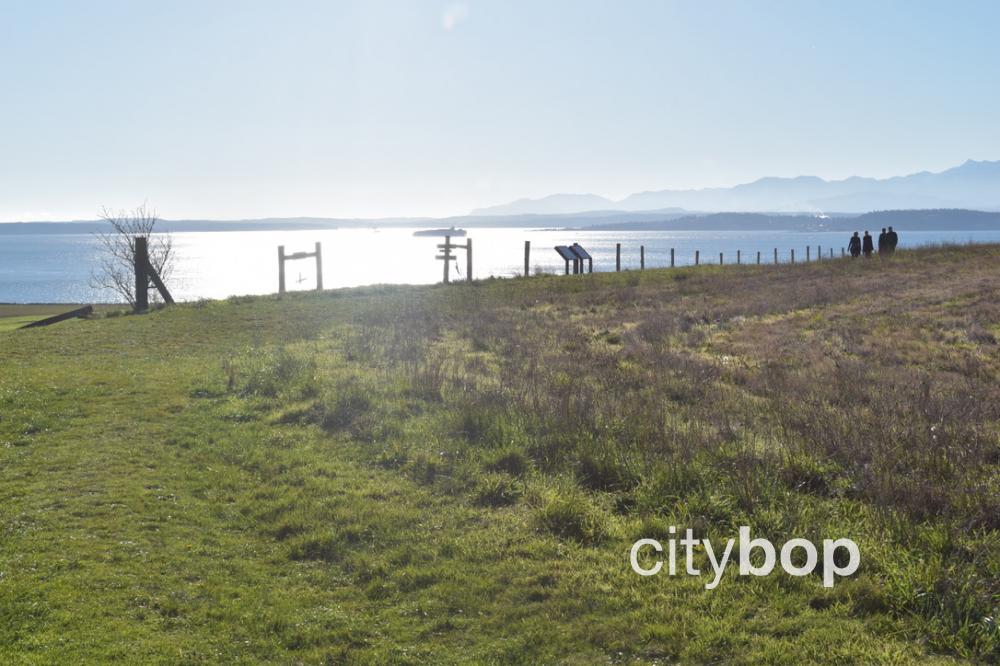
4. Combine both hikes (5 miles)
You can combine both the Bluff Trail and Ridge Trail for a total round-trip of 5-miles.

5. NPS Visitor Center
The National Park Visitor Center (otherwise known as the Cottage at Sunnyside), has trail maps and brochures (check hours). It's near the ridge parking lot at the end of Cemetery Road.
6. Interpretive Overlook
The Interpretive Overlook is also at the ridge parking lot, with incredible views of the idyllic farmland below, and some fascinating interpretive signs. This area has over a dozen historic farms from the original Donation Land Claim act, including the 20-acre Willowood Farm that has been operational since the 1890s.
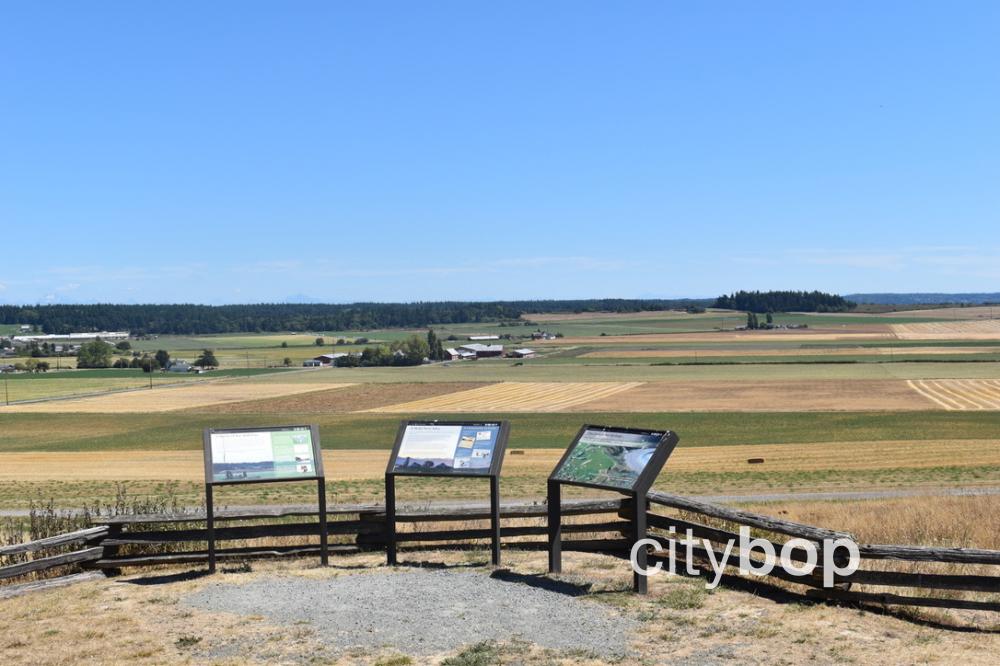
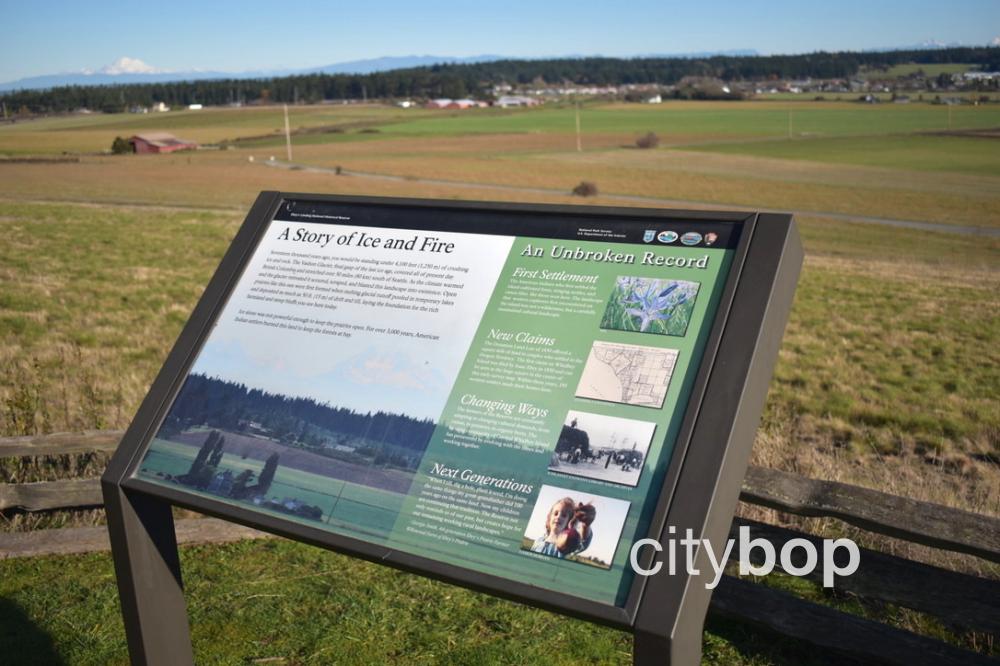
7. Sunnyside Cemetery
The historic Sunnyside Cemetery is where Isaac Ebey was buried without his head. His headstone reads that he died August 11, 1857 at the age of 39. There are so many fascinating pioneer headstones at this cemetery, including sea captains, homesteaders, and early settlers that arrived via the Oregon Trail. Their stories of hardship and survival are remarkable.
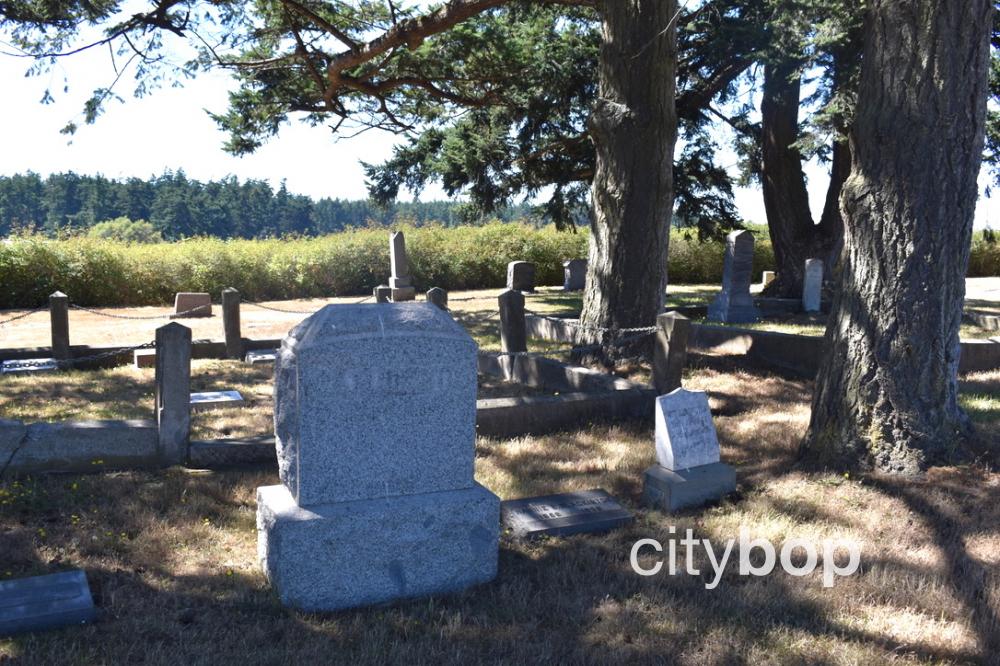
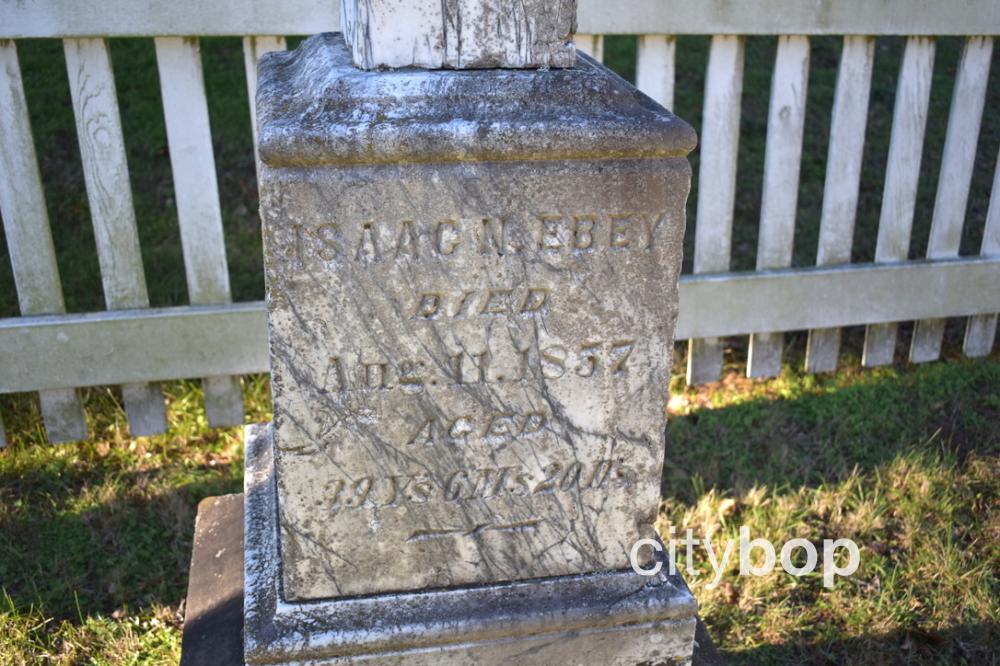
8. Davis blockhouse
The Davis Blockhouse can also be visited at the Sunnyside Cemetery, and was built in 1857 after the murder of Isaac Ebey.
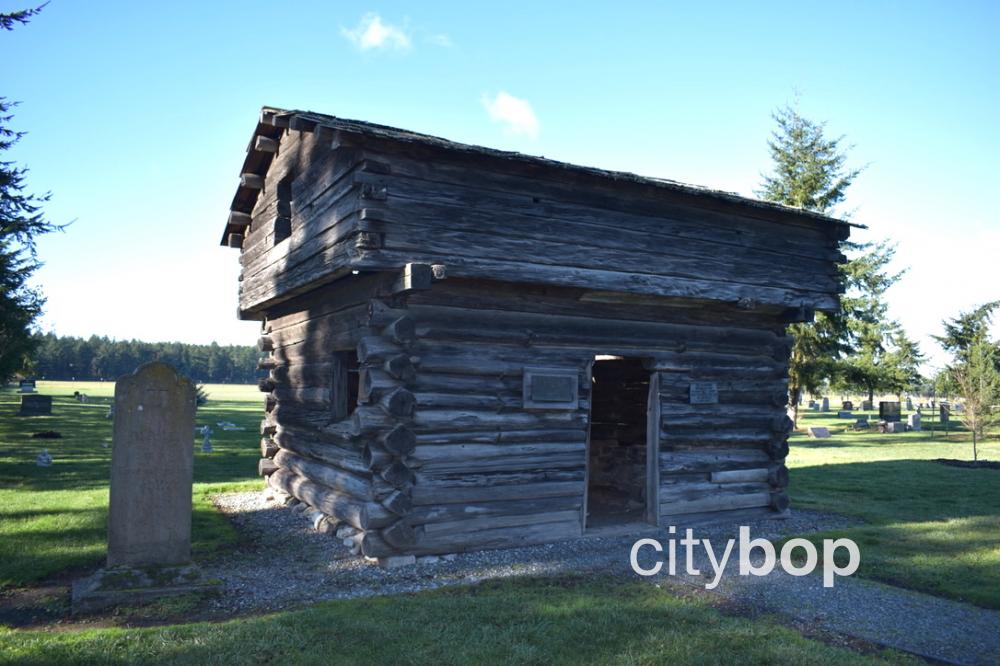
9. Hang out on the beach
Drive to the beach parking lot at Ebey’s Landing State Park, and enjoy a fabulous beach day! Take a long walk up the beach if the tide is low (of course the water is too cold for swimming). Enjoy the picnic tables set back from the beach at Ebey's Landing.
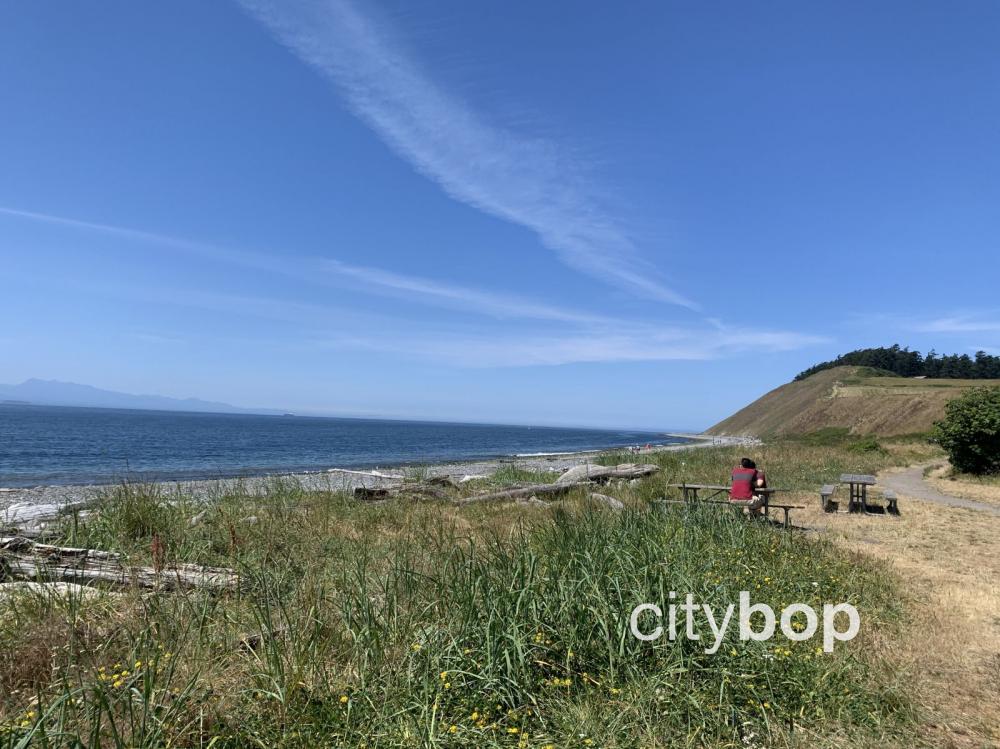
10. Visit the historic Ferry House
The Ferry House was constructed by Winfield Scott Ebey (Isaac's brother) and George Beam in 1860, to house travelers along the busy maritime along highway Admiralty Inlet. It had a superb position, just across from the U.S. Port of Entry at Port Townsend, and included a tavern, guest rooms and post office.
Tours are not currently run by the National Park Service (check here), but you can take a look at it from the outside. Park at the beach parking lot at Ebey's Landing State Park, then walk down the farm lane to the Ferry House.
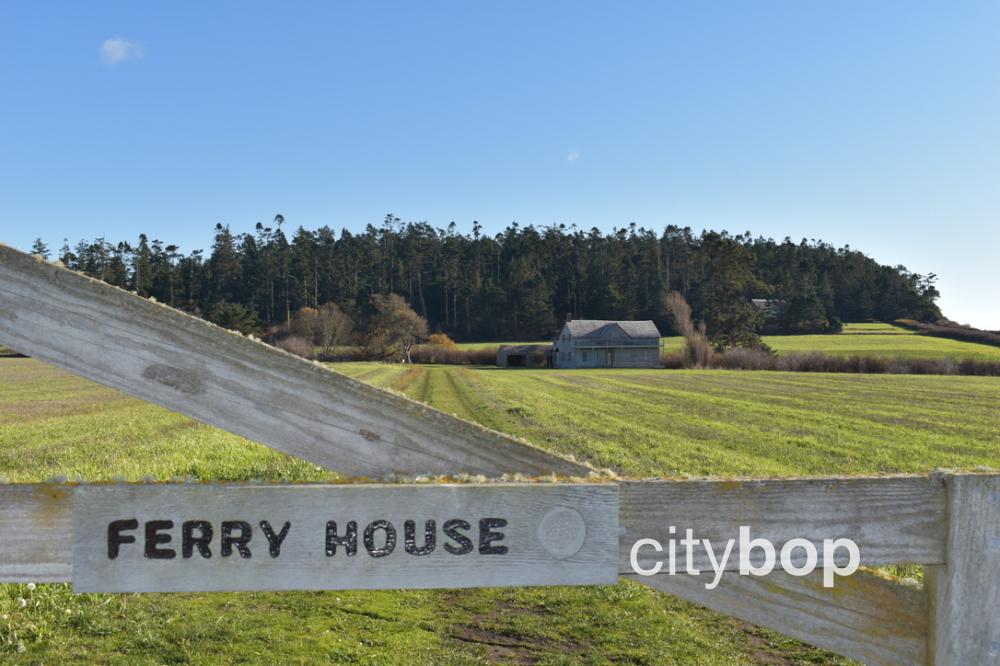
Two parking areas - beach or ridge
When you visit Ebey’s Landing, you need to choose from two parking areas 1.5 miles apart. These are at the beach (State Park land) or inland on the ridge (National Park Service land). Ebey’s Landing is a patchwork of State Park, National Park Service and private lands.
#1. Beach parking lot (end of Ebey’s Landing Road): This first parking lot overlooks the beach. It’s part of the day use area at the Ebey’s Landing State Park, and therefore requires a Discover Pass. The only amenities are a restroom and picnic tables. You can also walk to the historic Ferry House from here.
#2. Ridge parking lot (end of Cemetery Road): The second parking lot is inland, up high on a ridge adjacent to the Sunnyside Cemetery. This land is managed by the NPS, and includes the historic Ebey House & Blockhouse, NPS Visitor Center, and historic Sunnyside Cemetery. There are no entrance fees.
Ebey's Landing National Historic Reserve
Ebey's Landing National Historical Reserve was formed in 1978, the first ever in the nation. It includes a massive 17,572 acres of land on Central Whidbey Island, designed to protect the cultural heritage of the area and limit any future development. The reserve includes federal, state and private lands, like Ebey's Landing State Park, Fort Ebey, Fort Casey, the township of Coupeville, and over a dozen historic farms from original land claims.

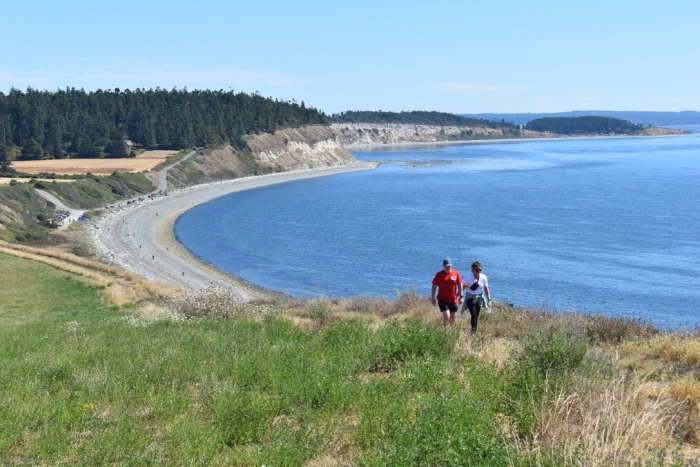
Review this attraction